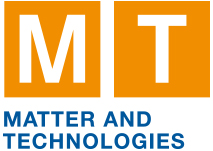Speaker
Description
Modern experiments in the fields of particle and astroparticle physics are increasingly relying on quantum sensors to meet their scientific goals.
For instance, experiments that aim to measure the neutrino mass, search for the neutrinoless double beta decay, perform dark matter searches, or measure the polarization of the cosmic microwave background are all planning to utilize several thousand individual detectors.
Simultaneous readout of these large-scale detector arrays is enabled by employing multiplexing schemes such as the frequency-division SQUID multiplexer in combination with highly customized readout electronics.
The room-temperature readout system performs digital synthesis of the microwave tones necessary for resonator stimulation and conducts real-time signal processing of the modulated multiplexer data to ultimately reconstruct the raw detector data.
Current methods for testing and verifying the demodulation algorithms within the digital logic of the readout system are limited in functionality.
In contrast, hardware-in-the-loop (HIL) methods allow system evaluation by digitally emulating the detector signals while operating the room-temperature system in a loopback mode.
This HIL approach improves firmware development efficiency by enabling the iterative evaluation of the system without the additional complexity introduced by the cryogenic infrastructure.
Moreover, demodulating known input data allows for more precise calibration of the electronics compared to using unknown detector data.
In this contribution, we introduce a digital cryogenic detector emulator (CryoDE) for microwave SQUID multiplexed detector systems, capable of generating pulses and frequency-modulated detector signals.
This resource-efficient digital detector twin can be integrated into the FPGA firmware of existing DAQ systems, allowing the adjustment of the detector signal parameters according to the requirements of each experiment.
We describe the internal structure and features of the detector emulation system within our custom HIL framework.
Finally, we utilize the emulator to investigate the performance of our real-time signal processing firmware with parameters optimized for different microwave SQUID multiplexed-based experiments.
| Speed talk: | Normal speed talk selection |
|---|

